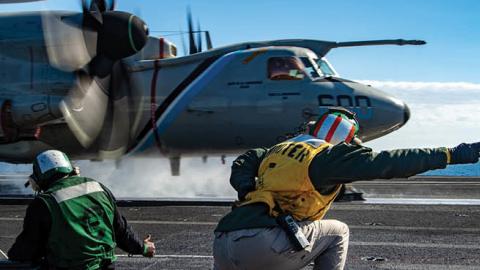A Need for Urgency
We believe that Joint All-Domain Command and Control (JADC2) is a critical priority for the Department of Defense (DoD) as it represents the best path towards deterring potential People’s Republic of China (PRC) aggression and addressing the other military challenges of our time. To the DoD, JADC2 represents the capability to sense and make sense of information at all levels, in all phases of war, across all domains, and with all partners, thereby ensuring information advantage at the speed of relevance.1 JADC2 is therefore the US military’s essential technical enabler to leverage joint and coalition capabilities in complex military operations. Practically speaking, this means choosing important operational problems and wiring together the right sensors and decision aids to deliver the right effects to solve them. The result will create operational dilemmas for our adversaries, and new options for US commanders.
The PRC has invested time, resources, and focus in countering the classical American way of warfighting focused
on domain dominance.2 Moreover, planned US modernization and new technological opportunities will not arrive in time to alter the military calculus of the pre-2030 window of opportunity for deterring the PRC’s hegemonic ambitions.3 And, even if the US military were able to field sufficiently large forces, it would struggle to deploy and sustain them at an appropriate scale and pace.
In the absence of a substantially larger or more capable US military, effective orchestration and integration of forces in mission time offers a way to create uncertainty for PRC planning and a more resilient US posture. The resulting force’s flexibility and operational tempo would be better able to buttress deterrence and counter aggression should deterrence fail. JADC2 promises to deliver this more adaptable and agile US military, but the Pentagon’s current top-down approach to implementing JADC2 is unlikely to yield results within the current decade.4
Therefore, we believe that JADC2 requires federated implementation rather than the current top-down approach. While certain key elements require leadership directive and focus—such as resourcing, definition of operational problems, and support for requisite command structures—operational concept development and technical implementation are best driven from the tactical edge, leveraging the creative talents of the Soldiers, Sailors, Marines, Airmen, and Guardians making up the US military.
Although we come from three distinct service cultures, we share a common advocacy for the enduring and central role of command and control in successful military outcomes and that this is a pivotal moment for combining human ingenuity with technical enablement in coordinating and managing operations.
JADC2 is the key to deterring or countering PRC aggression and therefore merits a Manhattan Project-like focus from the DoD, which should pursue it at velocity, i.e., directional speed, where joint operational problems determine the direction and distributed action around technical implementation provides the speed. And because it faces the most pressing operational problems, JADC2 should be targeted at Indo-Pacific Command (INDOPACOM).




















